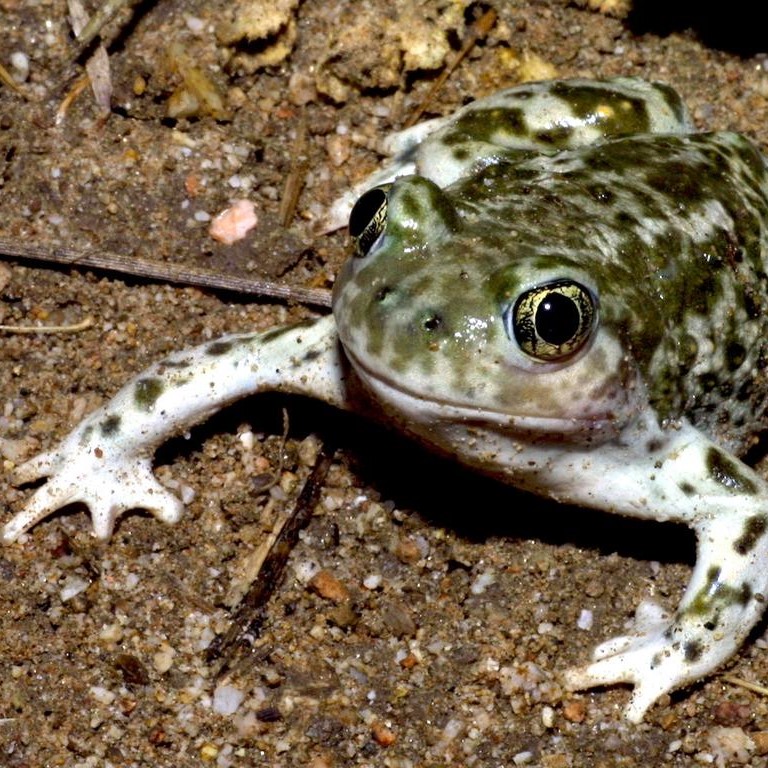WESTERN SPADEFOOT TOAD
Spea hammondii
The western spadefoot toad is endemic to California and northern Baja California. It occurs in the Central Valley, Coast Ranges and Southern California and within the central and southern portions of the upper Santa Ana River planning area. Their habitat includes sandy or gravely soils along slow-moving edges of rivers and streams, and temporary rain pools such as vernal pool and stock ponds. Their upland habitat includes grasslands, oak woodland, coastal sage scrub and chaparral.
Spadefoot tadpoles primary consume plankton and algae and adults feed on worms and insects. Western spadefoot can be dormant in the late summer months and breed from February through June.

| Life Stage/Activity Period | Jan | Feb | Mar | Apr | May | Jun | Jul | Aug | Sep | Oct | Nov | Dec |
|---|---|---|---|---|---|---|---|---|---|---|---|---|
| Emergence and Migration | ||||||||||||
| Breeding |
See a map of the modeled species habitat distribution
The primary threats to the western spadefoot are loss of habitat, and the introduction of nonnative predators, such as bullfrogs. Bullfrogs consume both adults and tadpoles. Management includes habitat protection and restoration, and the removal of these nonnative predators.
How you can help: Please do not collect spadefoot tadpoles and don’t release your unwanted pet bullfrogs or fish into natural areas as they prey on species such as the spadefoot.
